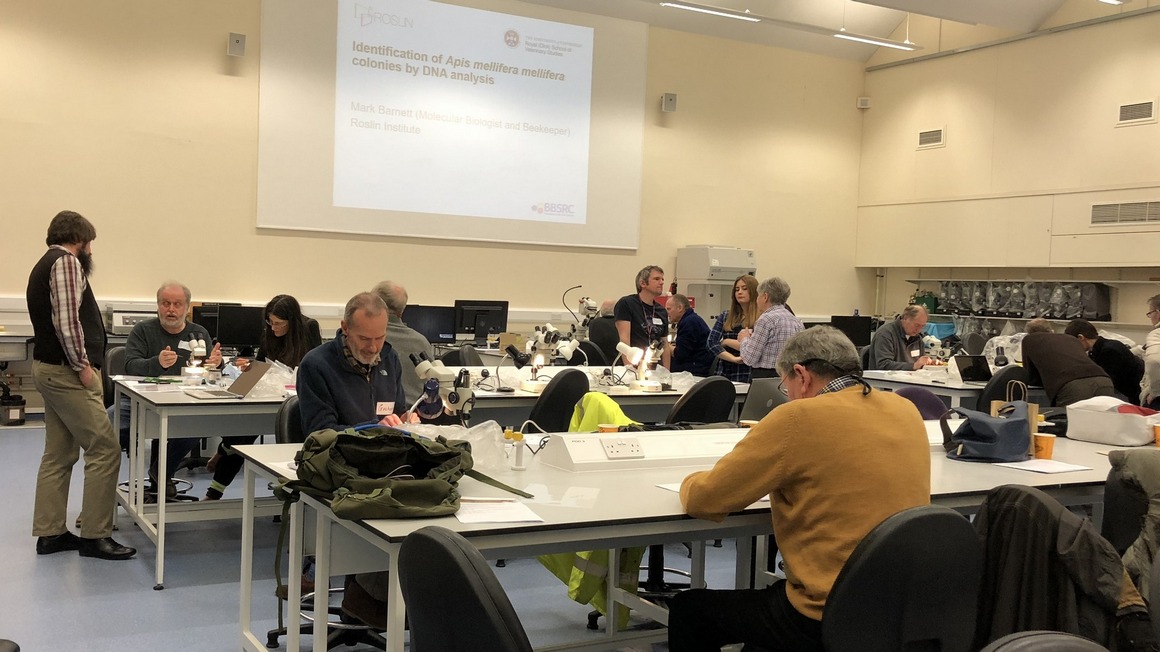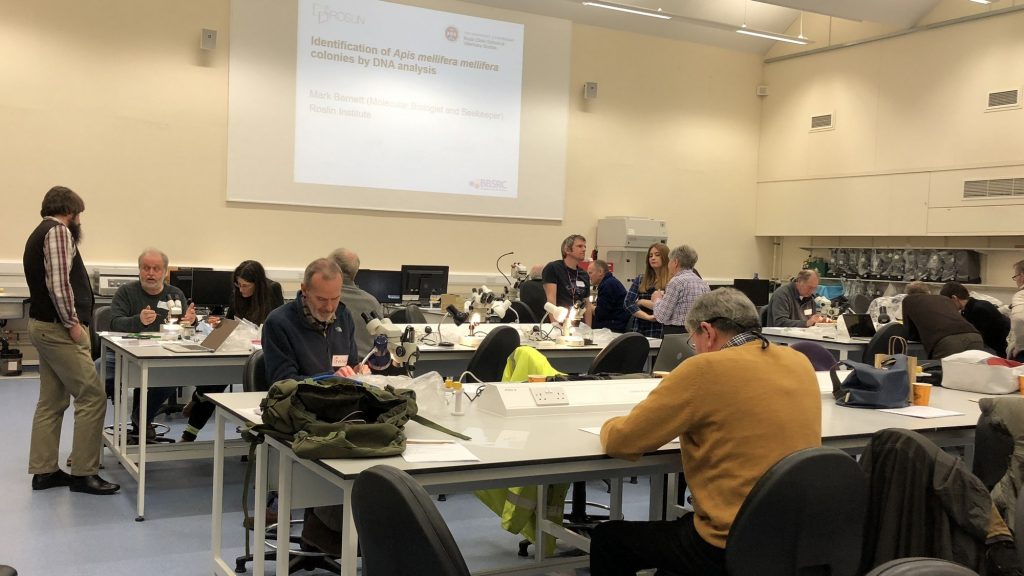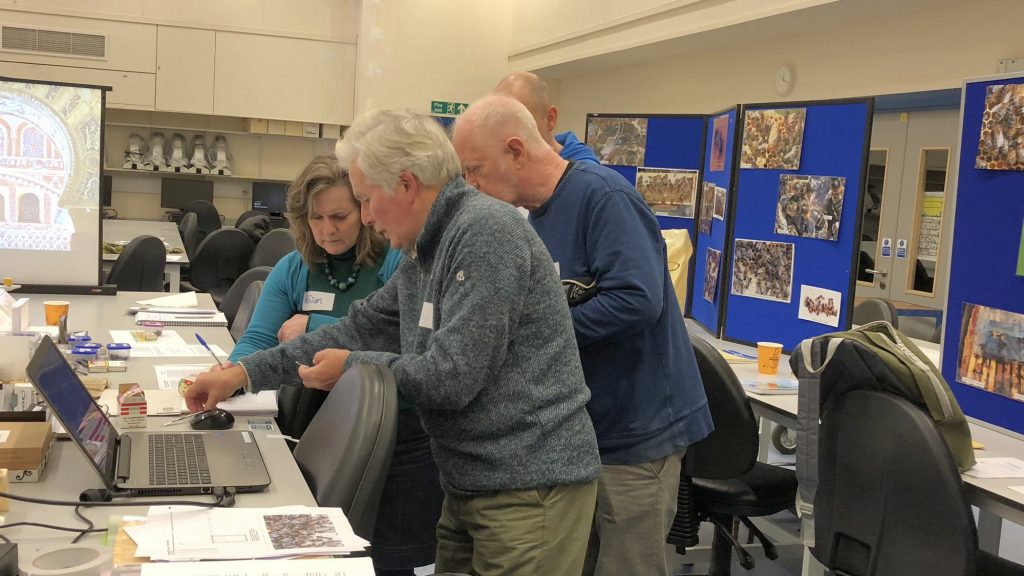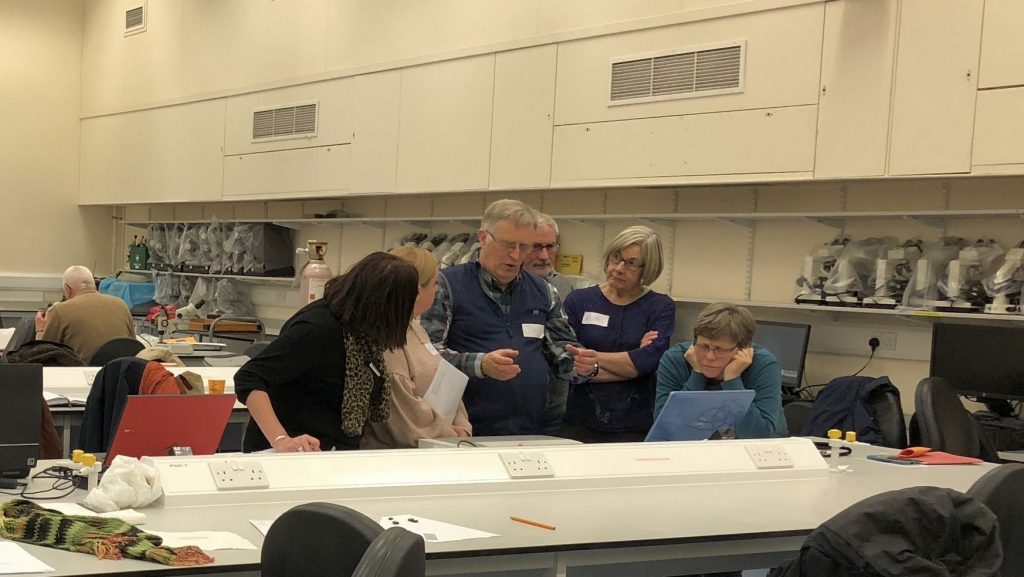How do we identify native honey bees? This question is fundamental to everything we aim to do at SNHBS and members were invited along to the University of Aberdeen in November to get a handle on just this question. Forty-five attendees had a full day hands-on introduction to the basic features and traits of Apis mellifera mellifera and got to hear about really exciting new developments in DNA analysis that might be available to hobby beekeepers soon.
Members were welcomed to one of the University’s teaching labs by Gavin Ramsay who gave an introduction to the day and then an overview of the history, traits, phylogeny and morphology of Amm. Gavin explained how to use visual characteristics to score bees and how this can be done by image analysis or microscopy.
Attendees were split into two groups with one working on binocular microscopes to identify either their own bee samples or examples provided. Kate Atchley and Gavin were on hand to answer questions and provide tips. The most surprising aspect of the day was the number of Amm-like bees that people had brought along. The second group worked on two different methods of using wing morphometry to aid identification: DrawWing (led by Jim McCulloch) and CBeeWing, a Swedish program (led by Jeff Baxter and John Durcakz). Again, members were asked to bring their own bee samples to test or were provided examples of Amm and carnica (as a contrast). After lunch the groups swapped activities.
A seminar by Dr Mark Barnett, of the Roslin Institute, was well received. Firstly, the basics of DNA analysis of bees was explained in detail and, secondly, a study on European bee races was discussed. Mark and Ewan Campbell both gave updates on the development of genetic “SNP chips” that several labs around Europe are working on and that may be available, at an affordable cost, to hobby and commercial beekeepers in the next couple of years. This development will revolutionise the speed and accuracy with which beekeepers can identify honey bee subspecies.
The final session of the day was reserved for a discussion on a planned survey of Scotland’s native bees. There was a lot of enthusiasm about this and several people outside the committee have now offered to help lead the effort alongside a group of other volunteers, starting next year. The survey will be planned over the winter and presented to the entire membership at next year’s AGM in March, where it will officially kick off.
The day was a great success – feedback was excellent from attendees and it looks as if we will run similar workshops elsewhere in Scotland in the future.
Ewan Campbell




